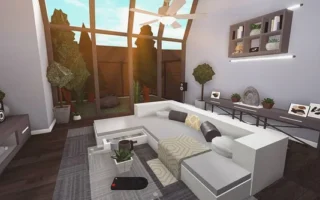Curtains do more than cover windows; they’re an opportunity to showcase your style and creativity. Choosing the right curtains can dramatically alter the ambiance of any room, making it feel cozy, vibrant, or serene. But what happens when you want something beyond solid colors? Mixing different shades can elevate your decor game to new heights, but it requires some thought. Our perception of our surroundings is heavily influenced by color. Understanding how hues interact with each other opens up endless possibilities for unique combinations that reflect your personality and taste. Whether aiming for a bold statement or subtle harmony, this guide will help you navigate the colorful world of window treatments. We’ll show you how to transform your space with the perfect curtain combinations; let’s begin by gathering your color swatches and getting started!
The Importance of Choosing the Right Curtains
Choosing the right curtains is crucial for several reasons. First, they influence the mood of your space. A light, airy fabric makes a room feel open and inviting, while heavier drapes create a cozy atmosphere. Curtains also serve practical purposes. They provide privacy from prying eyes and help control natural light levels. Opting for the wrong material could lead to glare or unwanted heat loss in colder months. Curtains can act as a focal point in your decor. The right color or pattern draws attention and enhances other design elements throughout the room. Investing time selecting suitable curtains ensures longevity and satisfaction with your interior design choices. Poorly chosen options may require frequent replacements, ultimately leading to frustration rather than enjoyment of your beautifully curated space.
Understanding Color Theory
Color theory is a fascinating study that explores how colors interact with each other. It helps us understand the emotions and atmospheres different hues can create in our spaces. At its core, color theory is divided into primary, secondary, and tertiary colors. Primary colors like red, blue, and yellow mix to form secondary colors such as green, orange, and purple. Tertiary colors come from mixing primary and secondary hues. Warm colors evoke energy and excitement, while cool tones promote calmness and serenity. This knowledge is essential when selecting curtain combinations for your home. Complementary color schemes—colors opposite each other on the wheel—create striking contrasts. Analogous schemes involve adjacent colors that harmonize beautifully without overwhelming the space.
The Basic Rules for Combining Different Colored Curtains
Combining different colored curtains can transform a room but requires some finesse. Start by selecting a dominant color that will anchor the look. This choice sets the tone for your space. Next, consider the color wheel. Complementary colors are opposite each other and create vibrant contrasts. Analogous colors are situated next to each other, creating a harmonious blend. Remember patterns. A bold patterned curtain can be paired with solid ones in coordinating colors to add depth without overwhelming the space. Keep proportions in mind. If one curtain is bright and eye-catching, balance it with softer hues elsewhere to maintain visual harmony.
Selecting Colors that Harmonize with Each Other: Tips
When selecting colors for your curtains, think about harmony. Look for shades that naturally coexist. Warm tones, like reds and yellows, often pair well. Cool tones such as blues and greens can create a calming effect. Take a look at the color wheel for inspiration. Complementary colors sit opposite each other and offer striking contrasts—think blue against orange or purple paired with yellow. Neutral colors are versatile, too. They serve as great backdrops for bolder hues while ensuring balance in your overall decor. Don’t shy away from experimenting! Test fabric swatches together to see how they interact in different lighting throughout the day. Always consider the mood you want to evoke in a room. Soft pastels can create tranquility, while vibrant jewel tones add energy and excitement to any space.
Creative Ideas for Mixing and Matching Curtain Colors
Mixing and matching curtain colors can transform a space in unexpected ways. Start with complementary shades that harmonize well together. For instance, pairing soft pastels with deeper hues creates an appealing contrast. Think about layering two different colored curtains. A sheer layer can be paired with a bold color to allow light while adding depth to your decor. This method also lets you play with opacity and texture. Consider using patterned curtains alongside solid colors for added interest. Stripes or florals can act as statement pieces when combined thoughtfully. Another creative idea is the ombre effect. Choose curtains that gradually shift from one color to another for a stunning visual impact across your window frame. Don’t avoid unconventional combinations—vibrant jewel tones mixed with neutrals bring richness without overwhelming the senses.
Curtain Combinations Using Patterns and Textures
Start by choosing a solid base curtain that complements your overall decor. This could be a neutral shade or a bold color that sets the tone for the space. Next, consider adding patterned curtains as an accent. Floral designs work beautifully in soft spaces, while geometric prints add modern flair. If you’re feeling adventurous, try combining stripes with polka dots! Just ensure there’s harmony in colors throughout. Texture also plays a vital role in creating visual appeal. Velvet adds luxury, while linen offers a relaxed vibe. Sheer fabrics can introduce softness without overwhelming other elements in the room. Avoid using multiple layers of fabric, too; mixing sheer curtains behind heavier drapes can provide privacy while allowing light to filter through beautifully. Experimentation is key when crafting your unique look: What works for one space may not suit another perfectly—and that’s part of the fun! Create your perfect window dressing combination by embracing creativity and reflecting your style.





